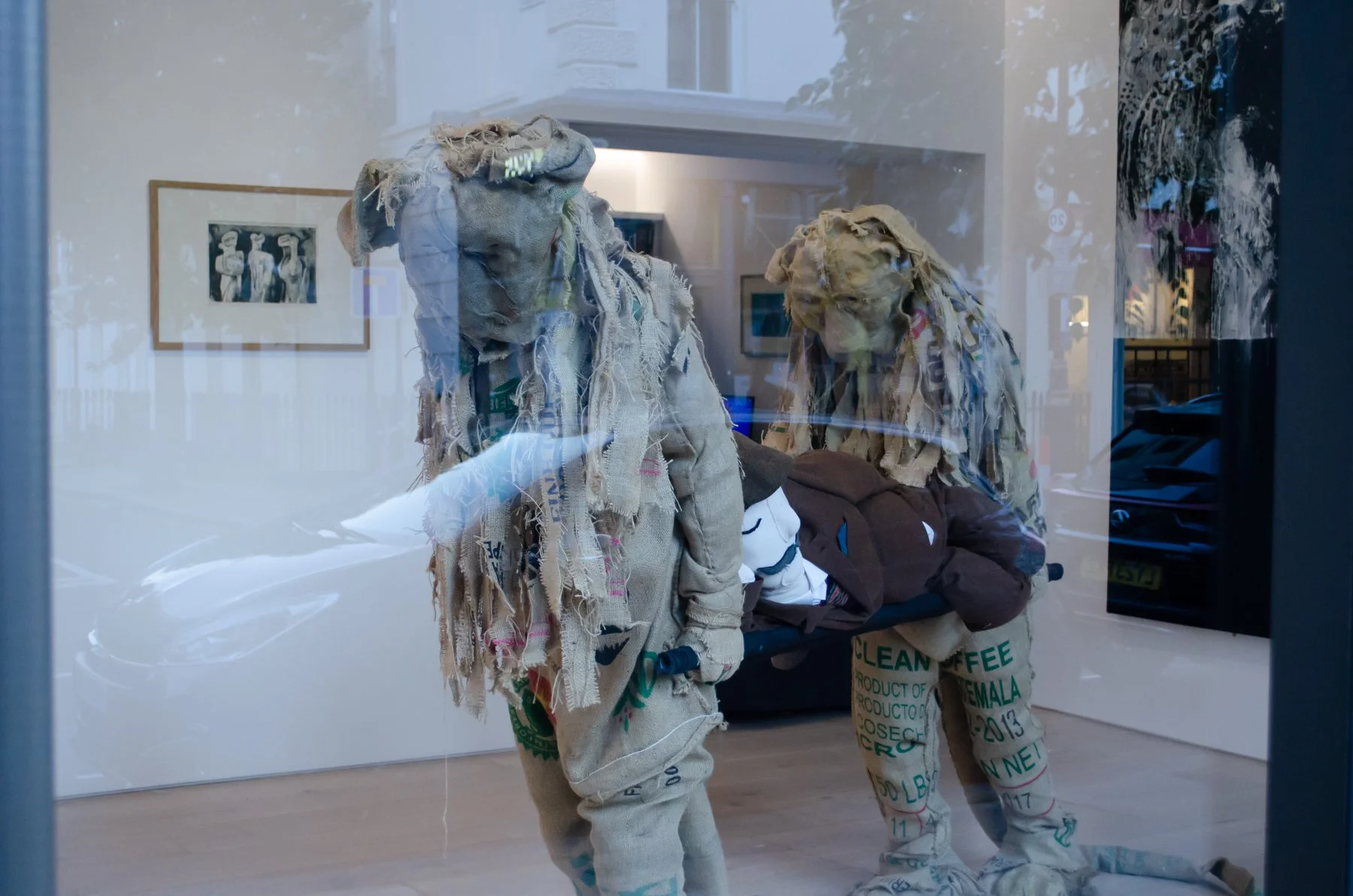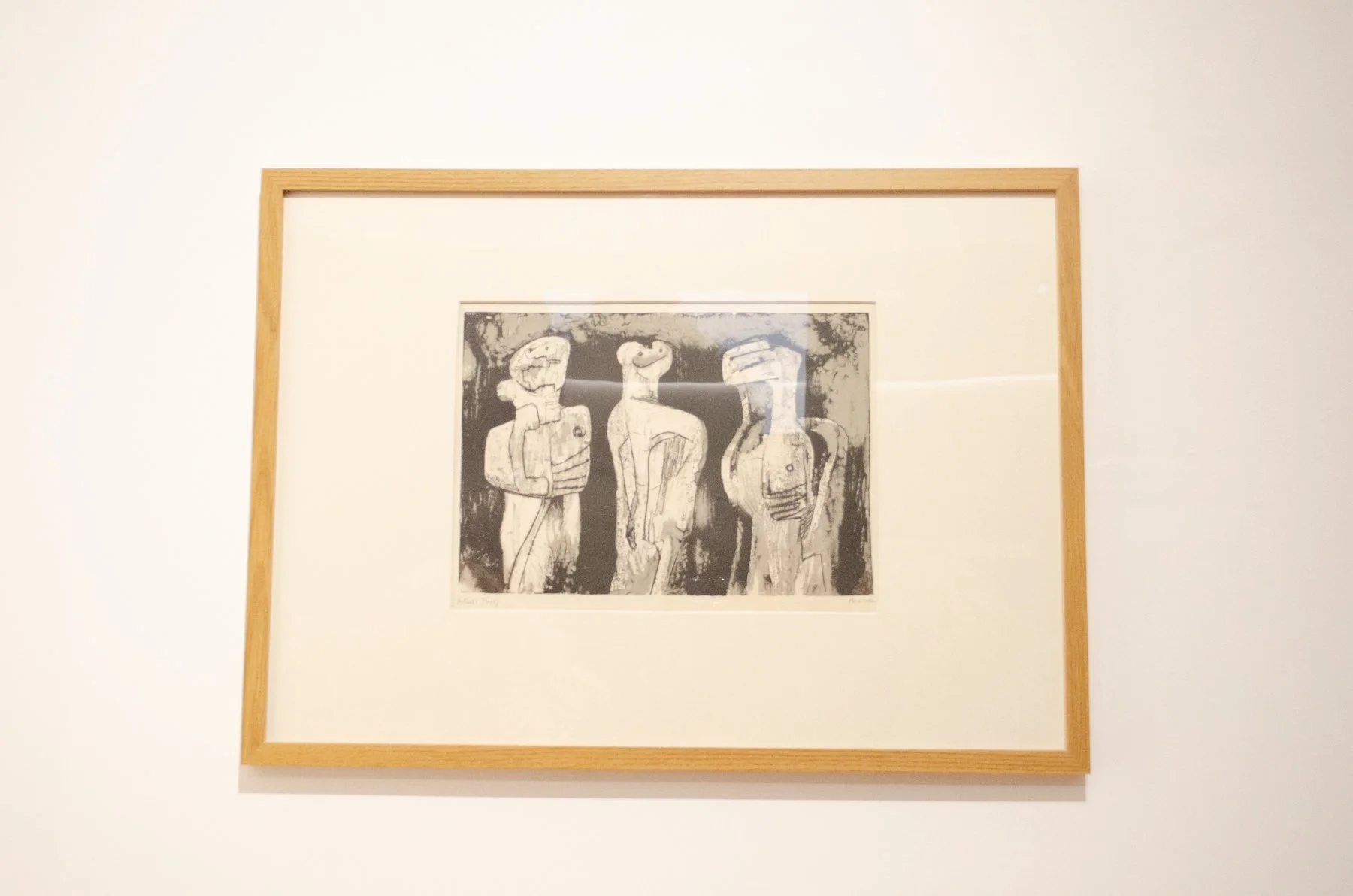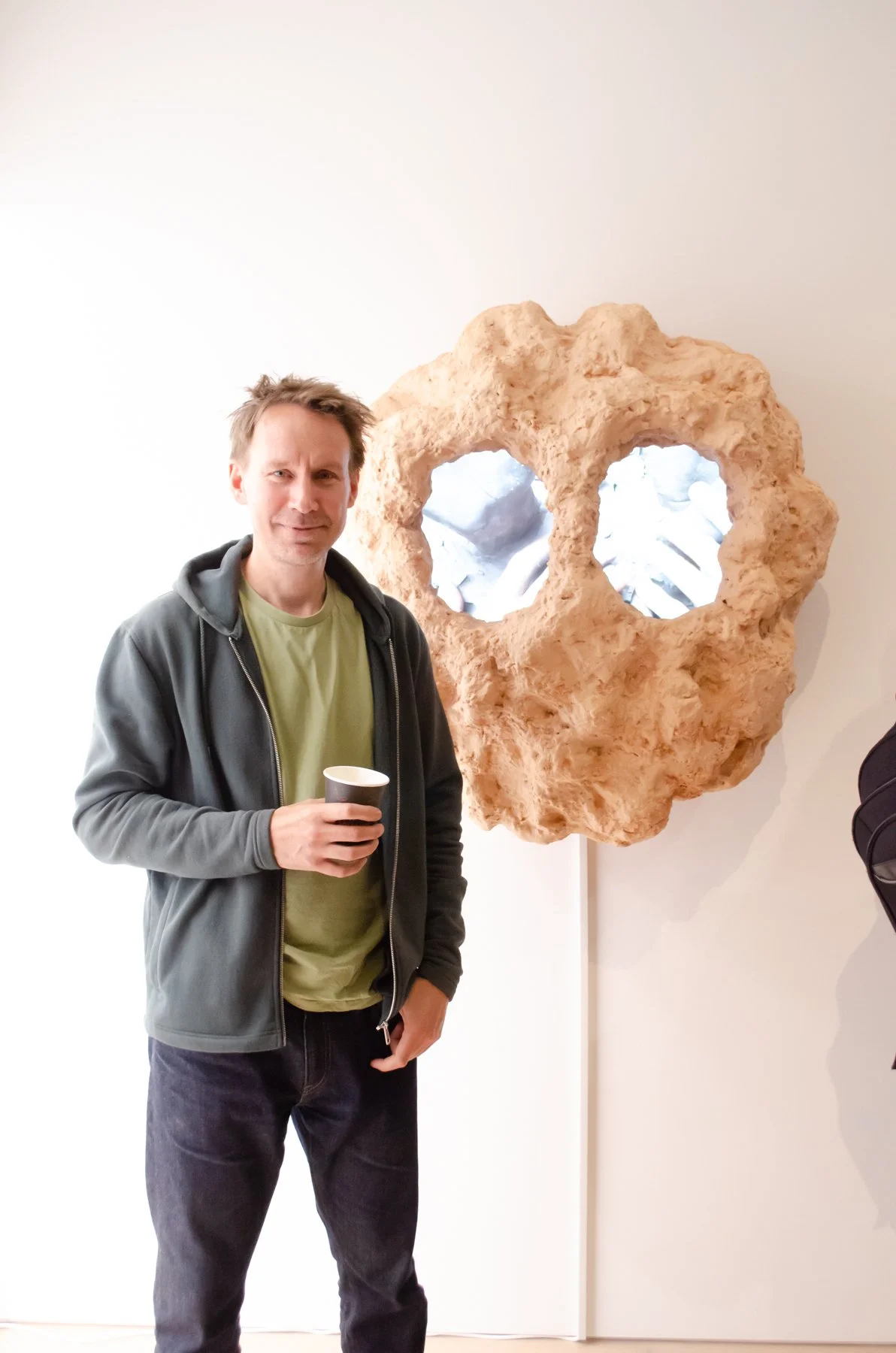
Material Matters
Curated by Abbie Griffiths, featuring works by Laura Ford, Henry Moore, William Cobbing and Blck Geezer.
Artists’ General Benevolent Institution, London.
Material Matters emphasizes the profound significance of materials in contemporary art. This exhibition explores how the physical substance of art—its matter—not only shapes the form and function of artworks but also embodies meaning, cultural narratives, and emotional resonance.
While there is a strong visual cohesion in the works curated for this exhibition, which reference health and emotional wellness, the overarching theme explores materials in three main ways: material as message, cultural context, and memory. The inherent properties of an artist's materials can convey emotions that become integral to the narrative. William Cobbing’s work is sensually tactile—his performances feature clay heads that blur the boundaries between body and environment. In Headspace, Cobbing combines a sculptural mask with a flat screen displaying a looped recording of his performance, in which paint pours out of clay. This imagery reflects the changing landscape and shifting emotions as we navigate life and aging. Likewise, Henry Moore used natural forms—such as stones and rocks—as inspiration for his figurative works. His Three Standing Figures print from 1973 is an abstract depiction that connects the human form to the natural landscape. This artist's proof was generously donated by Moore to the AGBI during his time on the board of trustees.
Materials carry cultural significance and histories, allowing artists to highlight the associations these materials hold within broader social, political, and environmental contexts. Laura Ford uses a range of materials to gently, yet often humorously, address macabre or uncomfortable themes. In Two Lions, she evokes a sense of empathetic conflict—who is more exhausted, and who is more deserving of rest and support? The lions are crafted from harsher fabrics, suggesting strength, yet their demeanor conveys exhaustion. In contrast, those being carried are made from softer materials, emphasizing their fragility. Ford’s work here captures a dilemma that resonates on multiple levels in the contemporary world.
Artists also use found objects to investigate the relationship between materials and memory, calling upon personal and collective histories embedded in the materials themselves. Blck Geezer’s diptych Black Nausea draws us into layers of pigment, surfaces, and textures, engaging with black as both a material and a transformative state. This work offers a space to contemplate unease and discomfort, and to speculate on the complexities of being beyond right or wrong.
























